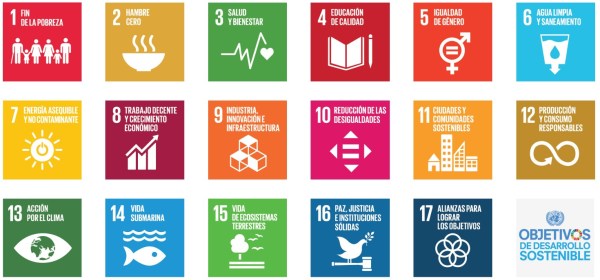We urgently need a “suitable” economy for the environment, an eco-friendly one. At our current pace, we would require resources equivalent to 1.6 planets and we wouldn’t be able to stop climate change.
How can companies become low-carbon and be more efficient? Is there any roadmap for this purpose? In the opinion of Marta Iglesias, senior consultant of the organisation Carbon Trust, there is a virtuous circle consisting of 4 steps: risk and opportunity planning; long term objective setting, innovation and technology application, and value chain sustainability extension.
Risk and opportunity planning
Every day, more companies use the framework of The Task Force on Climate-related Financial Disclosures (TCFD) to identify risks and opportunities. For example, any supply interruptions that come from vulnerable areas from a climate point of view; capitalising on the consumer interest in green products… Knowing this in detail is already a requirement of investment entities such as Aviva and BlackRock.
In the opinion of Geert Paemen, Director of Sustainability and Non-Financial Indicators at Telefónica, opportunities have to be seen from two points of view: improve productivity and efficiency and ensure the growth of the company. “This allows doing the business case for sustainability, an obligatorily long term focus of work, something that companies are not usually accustomed to.”

Long term objectives
Because what cannot be measured cannot be improved. How to ensure that our objectives are sufficiently ambitious and rigorous? In the field of emissions and energy companies such as Telefónica, they opt to guarantee their goals with the Science Based Targets Initiative.
Efforts are currently very notable: firms such as Danone, Carlsberg or Selfridgest have decided to achieve “zero carbon emissions” or become “carbon-neutral”. Other entities such as Telefónica are working to be 100% renewable.
 Innovation and technology application
Innovation and technology application
Technological innovation is the best tool to advance towards a low carbon economy. Companies, through digitalisation and new materials, are finding a way to replace the current linear schemes of -produce, use and throw- circular economy models. Telefonica’s digital platform to manage their waste, their base stations with self-generated renewable energy or their 100% recycled bottle and recyclable Lanjarón are some examples of this.
Value chain sustainability extension
Did you know that between 60% and 90% of the environmental impact of a company normally occurs in their value chain? In other words, in multiple processes ranging from the extraction of materials, to the work of our suppliers, the transportation of the products to reach the consumer, packaging… and finally, to how it is discarded after its useful life.
This step is perhaps the most complicated address. Iglesias provides several ideas: Danone has created a platform for providers with training, recurrent challenges with acknowledgements to improvements in sustainability, etc. The supermarket chain Tesco has launched a shopping club so that its suppliers can improve energy efficiency, for example, with led lights at a good price, including Tesco’s co-financing. Telefónica UK (O2) asks suppliers to reduce emissions in contracts.
The path of sustainability is difficult, but without a doubt, it is worth it. The prize? It is none other than the love of the market and the planet.









